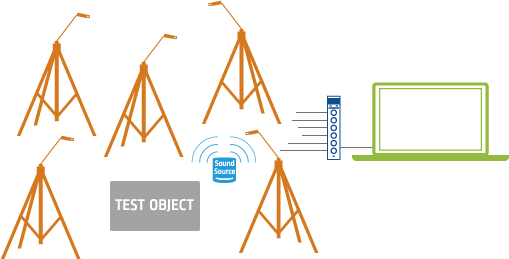
Sound pressure - reverberation room based sound power
For determining the noise emissions of products, the preferred quantity to investigate is sound power because it measures the absolute power of a noise source independently from its acoustic environment.
One of the main methods used for this is reverberation room-based sound power, where you place the source in a reverberation room (diffuse sound field) and determine its sound power from sound-pressure measurements.
Laboratory reverberation rooms as described in ISO 3741 are particularly suitable when performing precision-grade tests on comparatively small machines where the sound emitted is predominantly steady in character. Special reverberation rooms constructed to fulfil the requirements of ISO 3743-2, on the other hand, are less expensive and, since their methods provide engineering-grade results, particularly suitable for direct measurement of A-weighted sound-power levels of a series of small noise sources. Hard-walled test rooms as described in ISO 3743-1 are used for engineering-grade measurements; most ordinary, unfurnished rooms without special acoustical treatment comply with these requirements.
System suggestion
Built on the powerful PULSE platform, PULSE Sound Power in Reverberation Rooms Type 7884 software provides measurement and calculation procedures based on ISO 3741, ISO 3743-1 and ISO 3743-2 for determining the sound power of noise sources operating in reverberant test environments. A dedicated PULSE template enables determining, storing and reporting noise-emission quantities according to the various standards. Other components for the solution include a LAN‐XI data acquisition hardware, a set of microphones or a single rotating microphone.

Iscriviti alla nostra Newsletter e ricevi le informazioni più recenti dal mondo del suoni e delle vibrazioni



